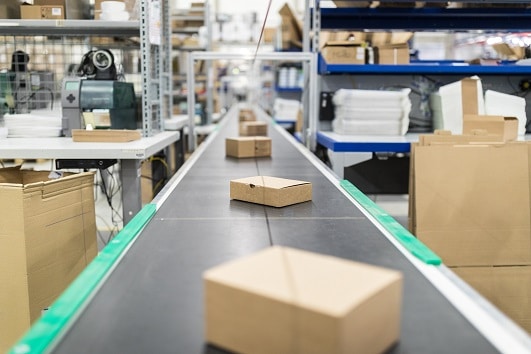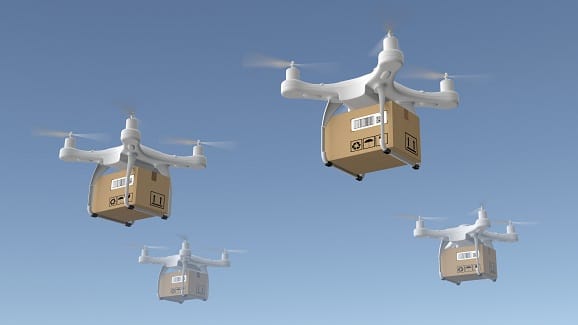In many spheres of human endeavor, from science to business to education to economic policy, good decisions depend on good measurement.
Ben Bernanke

Executives use Key Performance Indicators (KPIs) to understand whether their companies are making progress toward goals, and if not, what adjustments need to be made to get them there. KPIs are the crucial high-level metrics that are usually industry-specific and always tailored to the individual business implementing them.
A plan for improvement starts with an organizational vision, which leads to a strategy, which is enacted through tactics. KPIs measure the effectiveness of these tactics in delivering on the strategy and are one of the most valuable forms of business intelligence. KPIs should be updated in real-time and immediately available to give a running snapshot of performance anytime, anywhere. They should also be visible organization-wide, enabling a unified, team approach to business success.
If your postal or parcel organization isn’t tracking initiatives through key performance indicators, this piece will illustrate the dimensions of service in the postal industry, common impediments to their improvement, and our own experiences with each in client engagements.
This overview will be the first article in a series about assessing, planning, and executing improvements to the most critical problems post and parcel managers face.
These are the metrics that dictate success for any delivery organization. Every postal and parcel executive should know where they stand with each.
Customer Experience
The most successful companies in the world are customer-obsessed (see Amazon.) These companies recognize that exceeding customer expectations and delivering a great experience is key to increasing repeat usage, lifetime value, and brand equity.
In the delivery world, customers have come to expect conveniences that were unheard of before the digital age. They want flexible delivery dates and locations. They are conditioned to expect free or low shipping costs. They need to be able to track their shipments from origination to delivery. And, they need all of this visibility and decision-making power available on their mobile devices.
Service
In postal and parcel operations, much like any operations environment, speed is king. Mail pieces and parcels that move through from induction to delivery quickly and accurately (with few errors) are being processed efficiently. This is perhaps the oldest performance metric in the mailing industry because it pre-dates modern communications and the internet.
That being said, there are opportunities to use digital technologies in conjunction with scientific approaches to facility layout and worker organization to realize higher efficiency in service.
In our service consulting, we frequently encounter situations where pieces are being handled excessively or moving through a sub-optimal route through a sorting facility. We use a combination of facility redesign, equipment overhaul, and installation of automation both at software and machinery levels to achieve improvements.
Profitability (Revenues and Costs)
Variable costs are high and wide-ranging for mailers. From costs incurred through operations to penalties levied by regulators and posts, managers have many incentives to run a tight ship from a cost perspective. Common drivers of cost include undocumented errors, overpayments, efficiency costs associated with bad addressing, packing, barcodes, containerization, etc., and unfortunately, employee theft.
Equally important to managing costs is the task of growing revenues. Revenue growth is closely tied to the customer experience—if customers have an easy and enjoyable time using services, they will be more likely to use them more frequently and for a longer period of time. Whether through improved customer experience, addition of services lines, or development of new digital products, a business whose revenues aren’t growing is a business stagnating.
Delivery
The last mile is the term on everyone’s lips and represents the fastest-developing frontier in the postal and delivery industry.

Leading companies are mastering route optimization (a problem extensively studied since 1930), making massive investments in infrastructure and technology, and solving for delivery density in the final stages of fulfillment. They are doing the hard work further up the supply chain to reduce the extreme cost of inefficient routes, misdeliveries, and returns.
And, they are innovating, testing and implementing new delivery methods with technologies like UAVs and self-driving cars. The most capitalized delivery companies are leading the charge in mastering the last mile, but smaller, more agile organizations should be looking to equal or surpass the gains being made. Smaller organizations can test quickly and develop the region and market-specific solutions to meet aggressive customer expectations today and tomorrow.
Moving Forward
Stay tuned for the next installment in this series, a deep dive into measuring, improving, and mastering customer experience in post and parcel logistics. In the meantime, check out some of our most popular content at the links below:
Toward a Sustainable Digital Transformation
Big Data Modeling and Analytics and Their Impact on the Parcel and Postal Industry
